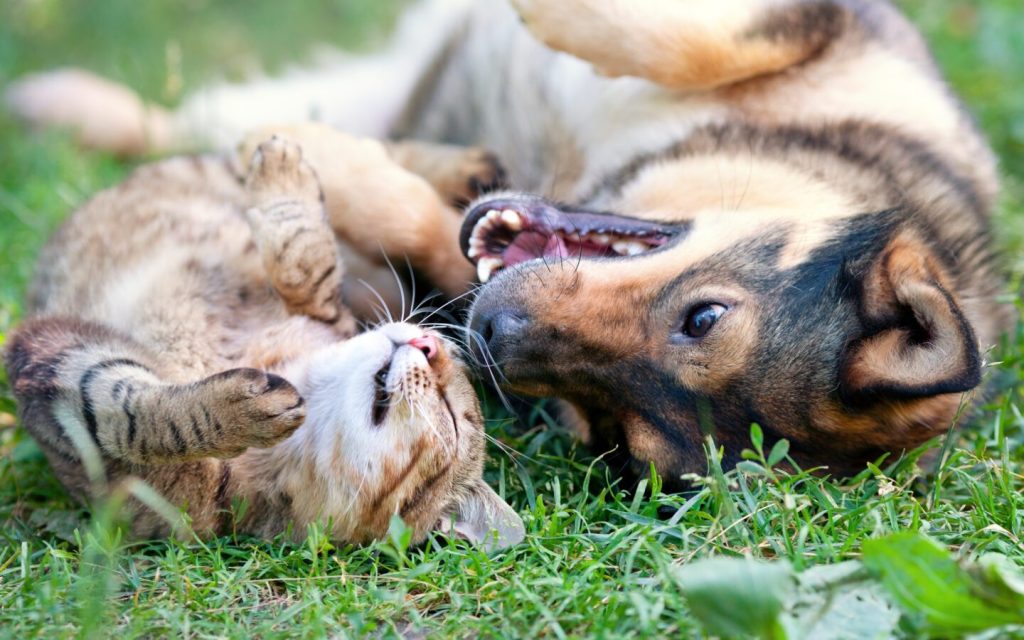Tips for Creating a Safe and Comfortable Environment for Your New Pet

Creating the Ideal Space for Your Furry Companion
Welcoming a new pet into your home is an exciting adventure that brings joy, love, and a few responsibilities. Ensuring that your home is safe and comfortable for your new furry friend is essential for a smooth transition. A well-prepared environment promotes healthy habits, reduces anxiety, and fosters a strong bond between you and your pet.
Consider these essential tips to create a welcoming space:
- Pet-proof your home: Begin by assessing your living space for potential hazards. Items such as toxic plants—like lilies, azaleas, or sago palms—should be removed or placed out of reach. Additionally, consider securing electrical cords with cord covers or clips to prevent chewing, and remove small objects such as coins, rubber bands, or paperclips that can be easily swallowed. You may also want to install baby gates to limit access to stairs or unsafe areas until your pet is accustomed to their new surroundings.
- Designate a cozy area: Creating a specific space for your pet helps them feel comfortable and secure. Choose a quiet corner of your home where they can escape the hustle and bustle. Invest in a high-quality pet bed that is appropriately sized for your furry friend—for instance, large breeds may need more room to spread out. Place soft, safe toys within reach to encourage playfulness and mental engagement. This area will become a safe haven for your pet, helping them adapt more easily to their new environment.
- Maintain a routine: Dogs and cats thrive on consistency. Establishing a daily routine around feeding, playtime, and potty breaks can create a sense of stability that is vital during the adjustment period. For example, dogs often benefit from regular walks at the same time each day, while cats may appreciate a set schedule for feeding and play. This predictability will not only help your pet feel secure but will also assist in house training and behavioral management.
Each pet has unique needs based on their species, breed, and personality. Researching your pet’s specific requirements is crucial for optimal care. For example, some breeds of dogs are more energetic and require extensive exercise and mental stimulation, whereas certain cat breeds may prefer a quieter environment with fewer disturbances. Tailoring their environment to match these needs will lead to happier and healthier pets.
By focusing on safety and comfort from the start, you can offer a nurturing environment that promotes your pet’s overall well-being. Furthermore, don’t hesitate to engage in online communities or local pet care workshops, as they offer a wealth of strategies and advice that can help you navigate this new journey. Discover how to develop the ideal space that will make your new pet feel right at home!
LEARN MORE: Click here to understand when and how to use nutritional supplements for cats

Understanding Your Pet’s Unique Needs
Before diving into the specifics of making your home safe and comfortable for your new pet, it is essential to understand their unique needs. Each species has its own set of requirements that can greatly influence their comfort and well-being. For instance, dogs often require ample space to move and play, while cats might thrive in vertical spaces where they can climb and observe their surroundings. Bringing a pet into your life means committing to cater to these differences.
To better prepare your environment, consider the following factors:
- Consider breed-specific traits: Different breeds come with distinct characteristics that may affect their daily routines and living needs. For example, energetic breeds like Border Collies or Siberian Huskies need significant exercise and mental stimulation, while more sedentary breeds may be content with limited activity. Researching the specifics of your pet’s breed can offer invaluable insights into their space, exercise, and social requirements.
- Understand your pet’s age: The age of your pet can also influence their safety and comfort. Puppies and kittens tend to be more curious and playful, meaning your home needs to be extra secure to prevent accidents. Older pets, on the other hand, may require easier access to food, water, and bathrooms, and they may prefer softer surfaces for resting. Tailoring your environment based on age specifics sets the stage for a smooth transition.
- Assess behavior and temperament: Each pet has a unique personality that shapes their preferences and fears. While some pets might be outgoing and adventurous, others may be timid and require a quiet sanctuary. Identifying these traits early on will help you create an environment that promotes confidence and comfort while reducing anxiety.
Be observant as you navigate your pet’s initial days in your home. Paying attention to how they react to different spaces can provide clues on how to adjust the environment to suit their needs. For example, if your pet seems apprehensive in larger, open spaces, consider providing cozy hiding spots or a smaller enclosed area to help them settle in.
Creating a welcoming atmosphere goes beyond physical space; it also involves the emotional climate of your home. The noise level, activity pace, and presence of other pets can significantly affect how your new companion adjusts. To foster a peaceful environment, prioritize interactions that promote bonding, such as gentle playtime or cuddle sessions, especially in the early days. This emotional support plays a crucial role in helping your pet feel secure and loved.
By cultivating an atmosphere tailored to your new pet’s specific needs, you’re not only enhancing their comfort but also setting the foundation for a strong and lasting relationship. Every step you take to ensure their safety and happiness is a step towards creating an unbreakable bond filled with joy and companionship.
| Category | Details |
|---|---|
| Safe Spaces | Creating a designated area for your pet helps them feel secure. |
| Comfort Items | Comfortable blankets and toys can reduce anxiety during their adjustment. |
| Environmental Adaptations | Consider pet-proofing your home to minimize hazards. |
| Routine | Establishing a consistent schedule helps your pet adapt quicker. |
| Socialization | Introducing new experiences gradually can help build confidence. |
Creating a safe and comfortable environment for your new pet is essential for their happiness and well-being. By establishing safe spaces, using comfort items, and adapting the environment, you significantly contribute to their emotional health. Remember that pets thrive on routines; therefore, consistency in feeding, walking, and playtime can ease their transition into your home. Moreover, socialization is key in developing well-rounded pets, allowing them to gain confidence through controlled introductions to new people and situations. Every step taken in crafting this nurturing atmosphere will enhance your pet’s adjustment journey, making it a more enriching experience for both of you.
LEARN MORE: Click here to discover the benefits of exercise for your pet’s mental health
Designing Your Home with Safety in Mind
Once you have a clear understanding of your pet’s unique needs, the next step involves designing your home with safety in mind. Pet-proofing your living space is an essential task to ensure your new companion remains safe from common household hazards. While the specific approach may vary by species, there are several universal measures that can enhance safety across the board.
Secure hazardous materials: Common household items—cleaning supplies, medications, and certain foods—can pose serious risks to pets. Make sure to store all harmful substances out of reach, ideally in locked cabinets. Foods like chocolate, grapes, and onions are toxic to pets, particularly dogs and cats, and should be kept securely away from curious noses. Additionally, keep plastic bags, rubber bands, and other small choking hazards tucked away.
Update your living spaces: Create a safe zone within your home where your pet can feel at ease. This could be a designated room equipped with their bed, toys, and food. Adding baby gates or cozy crates can help in managing spaces, especially if your pet is anxious or needs boundaries. If you have multiple pets, establishing separate areas can minimize stress and territorial disputes.
Careful furniture and decor selection: Select furniture and decor that can withstand potential wear and tear from your pet. Opt for fabrics that are resistant to stains and easy to clean, such as microfiber or leather. Avoid fragile decor, particularly items that can shatter or cause injury. Ensuring that heavy furniture is properly anchored to prevent tipping can also be a critical step in maintaining a safe environment.
Establishing a Comfortable Routine
Beyond safety, creating a comfortable routine is key to ensuring your pet feels secure and happy in their new home. A predictable schedule helps pets adapt more quickly, as they thrive on consistency. Here are some practical strategies for establishing a routine:
- Regular feeding schedules: Designate specific times for feeding your pet, as this can help establish a routine that promotes stability. Whether you choose free feeding or scheduled meals, consistency is key, especially for younger pets who may require more frequent meals.
- Daily exercise: Incorporate regular exercise into your pet’s daily routine to help manage energy levels and reduce anxiety. For dogs, incorporate long walks, play sessions, or trips to the dog park, while for cats, make sure they have opportunities for interactive play and climbing. This not only contributes to their physical health but also enhances their mental well-being.
- Socialization opportunities: Introducing your pet to new experiences, people, and even other animals can enrich their lives significantly. Create positive and gradual social interactions to build their confidence. Attend pet-friendly events, or consider classes that promote training and socializing, such as obedience or agility courses.
Not every pet will transition to their new home at the same pace. Patience and understanding are crucial during this adjustment period. By providing a secure and welcoming environment, tailored to meet their safety and comfort needs, you’re setting the stage for a joyful life together. Keep in mind, the goal is not just a house for your new pet, but a true home filled with love and fulfilling experiences. With the right measures, you can transform your environment into a haven where both you and your pet can thrive in harmony.
DON’T MISS: Click here to learn more about using nutritional supplements for your cat
Conclusion: A Foundation for a Happy Life Together
Creating a safe and comfortable environment for your new pet is not just about filling their space with the essentials; it’s about laying the groundwork for a thriving relationship. As you consider design elements, remember that your home should reflect the needs of your furry, scaly, or feathery friend. Simple actions such as pet-proofing your living space, securing hazardous materials, and choosing durable furnishings can dramatically reduce risks and increase comfort for your new companion.
Equally important is establishing a routine that fosters security and predictability. Incorporate regular feeding times, daily exercise, and socialization opportunities to enrich their lives and help them adapt smoothly to their new surroundings. These elements contribute significantly to your pet’s overall well-being and can alleviate stress for both of you during the transition period. Patience during this adjustment phase is essential; every pet will find their rhythm in their own time.
In essence, your commitment to providing a nurturing environment—characterized by both safety and stability—will set the stage for a lasting bond filled with happiness. Remember, pets are not just additions to your household; they become integral members of your family. By implementing these tips for creating a safe and comfortable environment, you’re ensuring that your home is a place where your new pet will flourish, allowing you both to build a rich tapestry of shared experiences. Explore more resources and connect with fellow pet owners to discover even more ways to enhance your shared life; the journey of companionship is just beginning.



